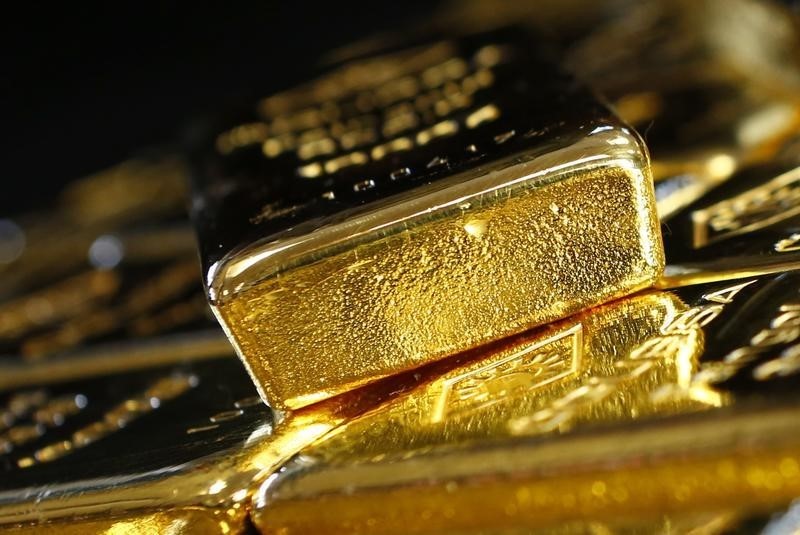Investing.com - Gold prices ticked higher in the first trading session of 2017 on Tuesday, but gains were limited as the prospect of rising U.S. interest rates this year kept sentiment bearish.
Gold for February delivery on the Comex division of the New York Mercantile Exchange tacked on $2.00, or around 0.2%, to $1,153.75 a troy ounce by 3:50AM ET (08:50GMT).
The U.S. dollar rose on Tuesday, crawling back toward its 14-year-high against a basket of currencies with markets focused on the possibility of further U.S. interest rate hikes in 2017.
The U.S. dollar index, which measures the greenback’s strength against a trade-weighted basket of six major currencies, was up 0.55% at 102.93 in early trade, not far from last week's 14-year peak of 103.62.
Market analysts warned that the outlook for gold remains cloudy in the near-term amid expectations of U.S. interest rates rising more rapidly during the incoming Trump Administration.
The Federal Reserve hiked interest rates for the first time in a year last month and projected three more increases in 2017.
Prices of the yellow metal have fallen sharply since Donald Trump was elected president as a soaring U.S. dollar, rising Treasury yields and a record-breaking rally on Wall Street have dampened its appeal.
The precious metal is sensitive to moves in U.S. rates, which lift the opportunity cost of holding non-yielding assets such as bullion, while boosting the dollar in which it is priced.
Both a strong dollar and higher interest rates are typically bearish for gold, which is denominated in dollars and struggles to compete with yield-bearing assets when borrowing costs rise.
Also on the Comex, silver futures for March delivery added 7.3 cents, or 0.45%, to $16.02 a troy ounce during morning hours in New York.
Meanwhile, platinum tacked on 0.4% to $909.50 and palladium inched up 0.1% to $683.73 an ounce.
Elsewhere in metals trading, copper futures rose 1.9 cents, or 0.8%, to $2.525 a pound following a survey showing a pickup in China's factory activities for December.
The China Caixin manufacturing purchasing managers' index, a private gauge of nationwide factory activity, rose to 51.9 in December from 50.9 in November.
The figure marked the strongest upturn in Chinese manufacturing conditions since January 2013.
The Asian nation is the world’s largest copper consumer, accounting for almost 45% of world consumption last year.
